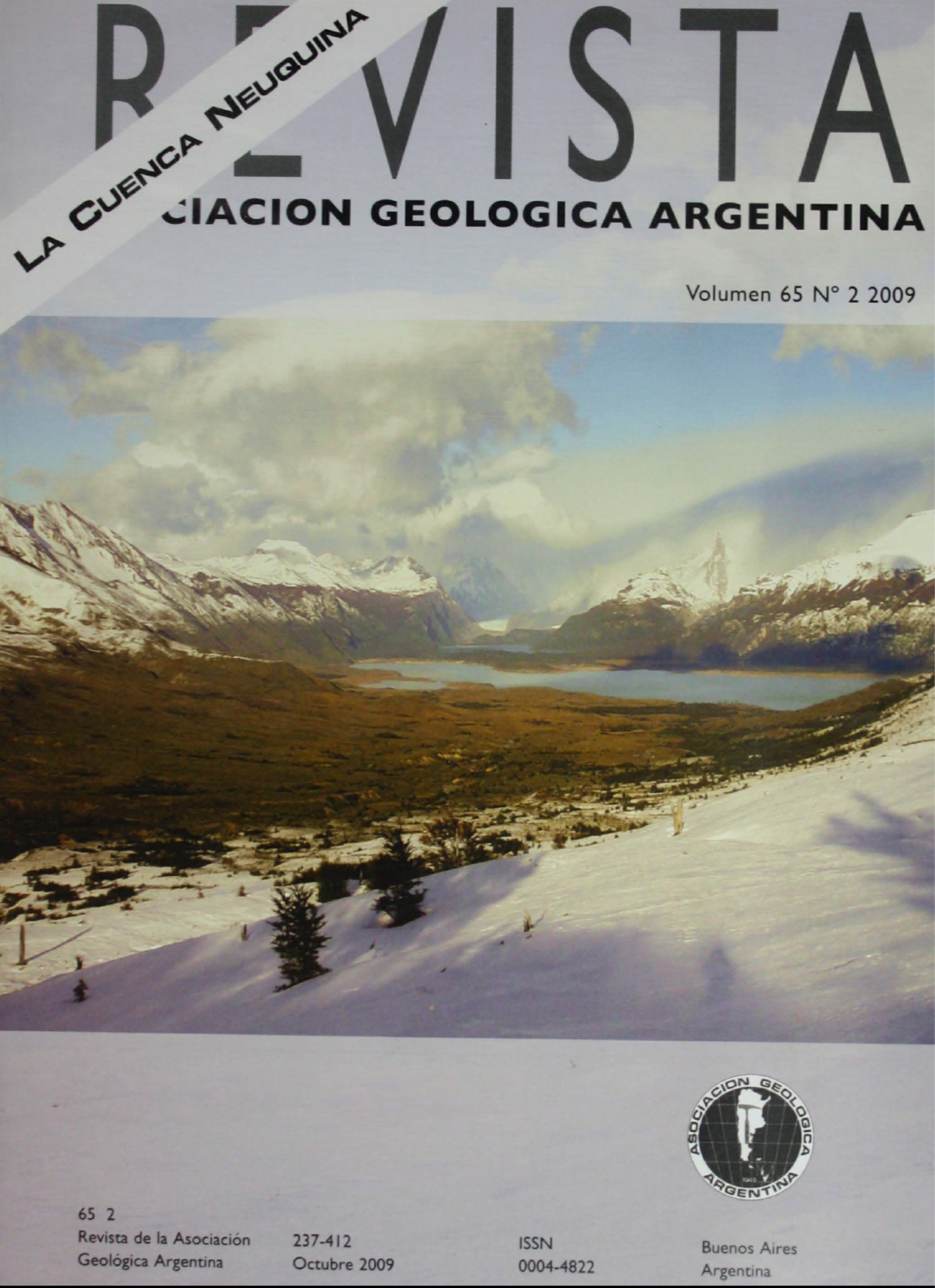Micropaleontología de la Formación Agrio (Cretácico Inferior) en distintos sectores de la Cuenca Neuquina
Contenido principal del artículo
Resumen
Se analizan conjuntamente lananoflora y microfauna de foraminíferos bentónicos y ostrácodos de la Formación Agrio, en tres sectores de la cuenca Neuquina, a fin de establecer las edadesinvolucradas y considerar las variaciones paleoambientales. En el sector nortede la cuenca se reconocen las sedimentitas más antiguas de la Formación Agrio, asignadas con amonites al Valanginiano inferior y portadoras de unamicrofauna monoespecífica de Epistomina loncochensis Ballent que indicaambientes disóxicos. Suprayacen limolitas con una microfauna variada deforamíniferos de plataforma marina normal, las que son reemplazadas pormicrofaunas empobrecidas vinculadas a somerización. La edad de la secuenciadefinida con nanofósiles es valanginiana tardía - hauteriviana tardía. Paraposiciones medias y sur de la cuenca, la edad que indica la nanoflora de la Formación Agrio nuevamente queda comprendida entre el Valanginiano superior y el Hauterivianosuperior. La microfauna hallada sugiere frecuentes oscilaciones eustáticasentre ambientes de plataforma y costaneros. En el sector austral de la cuenca,una asociación poco diversa de foraminíferos y una alta relaciónostrácodos/foraminíferos, indica ambiente marino marginal, escasa profundidad ycondiciones de salinidad normal. La presencia de un nivel próximo a la base dela secuencia con abundantes foraminíferos adheridos, indicaría un aumento en laenergía del medio. Asimismo la elevada diversidad de Platycopida sugiere aguastemplado-cálidas a subtropicales.
Detalles del artículo

Esta obra está bajo una licencia internacional Creative Commons Atribución-NoComercial 4.0.
Nota de copyright
Los autores conservan los derechos de autor y garantizan a la revista el derecho de ser la primera publicación del trabajo licenciado según una licencia de atribución Creative Commons que permite a otros compartir el trabajo con el reconocimiento de la autoría y de la publicación en la que se publicó por primera vez.
Declaración de privacidad
Los nombres y direcciones de correo electrónico introducidos en esta revista se usarán exclusivamente para los fines declarados por esta revista y no estarán disponibles para ningún otro propósito u otra persona.

